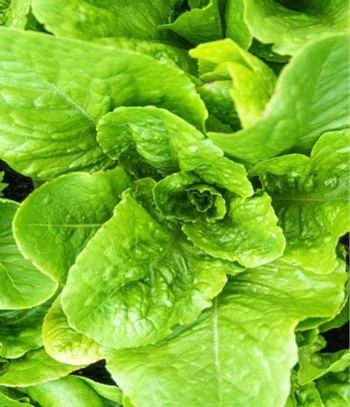Lettuce
-
Scientific NameLactuca sativa
-
General InformationCool season annual, but can be grown year-long along the coast. Varieties include faster growing loose leaf, lightly headed butterhead, romaine, and tight headed crisphead. Native to Middle East.
 Photo: Sophie Mikat, Unsplash
Photo: Sophie Mikat, Unsplash -
When to Plant
Plant so that the lettuce matures in cool weather. Start seeds indoors in January, direct seed in February, and plant seeds and starts in the garden until May. Depending upon microclimate, variety, and prevailing weather, direct seed planting may extend from February to August. If using transplants, plant three to four week-old seedlings in the ground. Ideal temperature range for growth is 45 to 73 degrees, and for germination, 68 to 77 degrees.
-
Planting
Plant seeds in single rows, wide rows, or small blocks and cover with one-quarter inch of soil. Thin when plants are two to three inches high. Spacing will vary according to variety, usually six to 12 inches apart. Check seed packet. Plant in succession or plant different varieties that harvest at different times. Loose leaf and some butterheads do well in containers with fertile soil and regular watering.
-
Soil Requirements
Prefers fertile, loose, well-drained soil to accommodate weak root system. Several weeks prior to planting, amend beds by raking in one to two inches of finely-grained compost, finely shredded organic matter or planting mix, and other amendments as indicated by soil test.
-
Water Requirements
Needs frequent, light watering from planting until harvest. Too little water results in stunted, unhealthy plants. Too much water encourages root rot.
-
Fertilizing
If beds have not been amended prior to planting, add a low value fertilizer mix when planting. Provide light application of organic nitrogen fertilizer, such as fish emulsion, every three to four weeks.
-
Pollination
Lettuce is harvested for eating before it goes to seed.
-
Harvesting
Harvest first by thinning out seedlings. As plants grow, harvest by taking two to three leaves per plant, leaving the rest of the plant to continue growing. Harvest by pulling or cutting the whole plant anytime. If cut, leave one inch of stem for regeneration. Harvest head lettuce when the heads are firm. Better to harvest too early than too late to avoid bitter taste and bolting (flowering).
-
Storage
Rinse lettuce after harvest and store leaf lettuce in plastic bag in refrigerator for a week. Store head lettuce in plastic bag in refrigerator for a couple of weeks.
-
Good Varieties for Marin
Looseleaf matures in 45 to 60 days: 'Salad Bowl' 'Oakleaf' 'Red Sails'
Butterhead matures in 50 to 75 days: 'Continuity' 'Four Seasons' ‘Buttercrunch’
Romaine matures in 65 to 75 days: 'Little Gem' 'Rouge d’Hiver' ‘Breen’
Crisphead matures in about three months: 'Diamond Head' 'Summertime'
-
Helpful Tips
Loose-leaf lettuce is most commonly grown in home gardens. Choose best varieties for your microclimate and the season. Where sunny and warm, plant where the lettuce will benefit from the shade of other plants, especially during in the hottest part of the day.
-
Common Problems
Seedlings prey to birds, cutworms, earwigs, slugs and snails. Other pests include aphids and spider mites. Overwatering can lead to root rot.
-
Pests- Diseases & More

